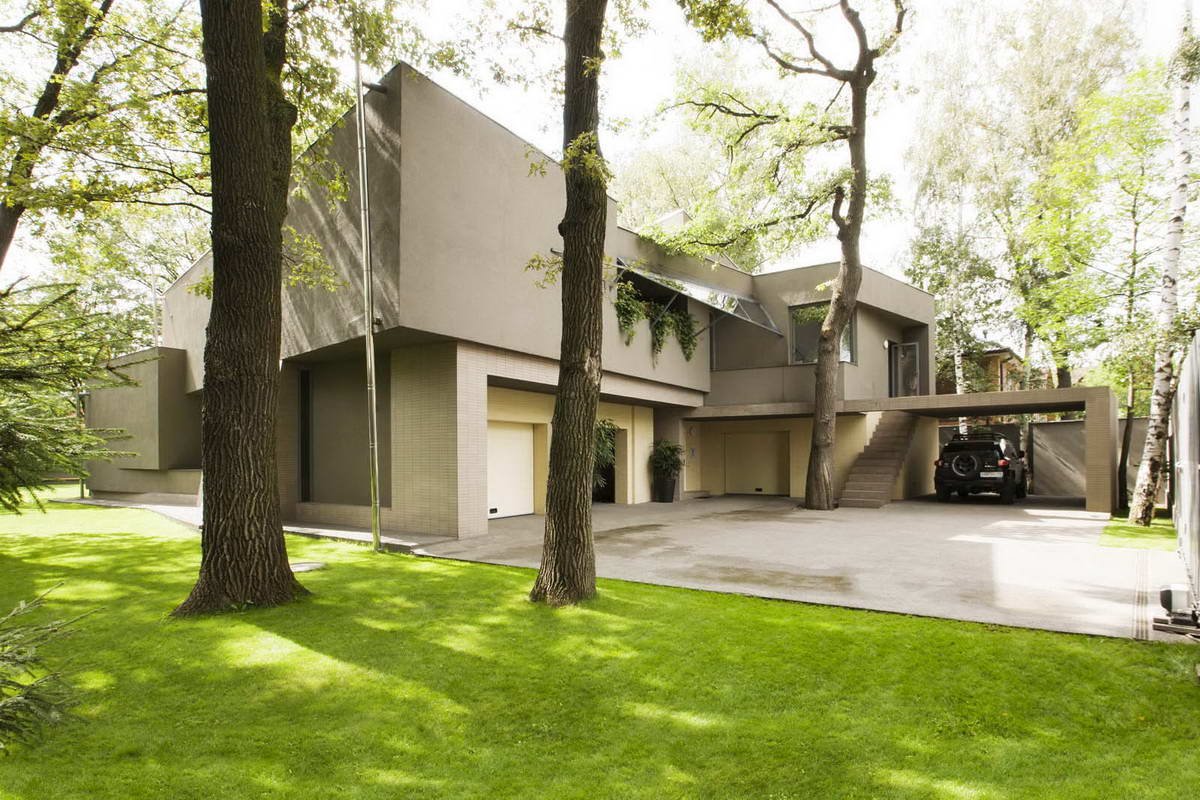#13323. Minimalist concrete facade with integrated natural elements

This is a remarkable example of modern architecture where a minimalist facade harmoniously blends with the natural surroundings. The building presents a complex of geometric volumes executed in a restrained color palette. The facade is characterized by clean lines, volumetric projections, and horizontal planes, creating an interesting play of light and shadow.
Particular attention is drawn to the integration of natural elements into the architectural ensemble — existing trees have been carefully preserved and incorporated into the overall composition, literally "growing through" concrete structures. This practice of environmentally conscious facade design is becoming increasingly relevant in contemporary architecture, allowing for the creation of harmonious spaces that don't disrupt the existing landscape.
The building's facade is primarily constructed of monolithic concrete and glass, utilizing various textures that add visual depth. Vertical and horizontal articulations create a rhythmic pattern, while large windows ensure maximum natural lighting for interior spaces. The cantilevered projection of the upper floor adds particular expressiveness to the facade, creating a dynamic architectural accent.
Several techniques can be identified in this facade design that could be adapted for one's own home: the contrasting combination of massive opaque surfaces with large glazed planes, the use of diverse textures of the same material, integration of natural elements, and a well-thought-out system of canopies and overhangs that provide protection from weather conditions without compromising aesthetics.